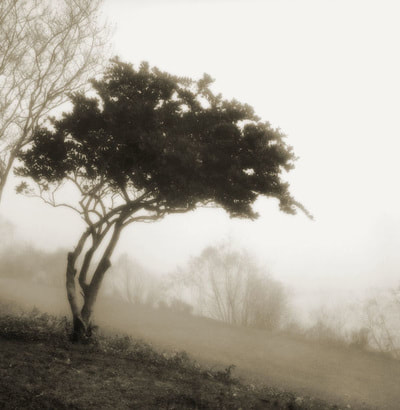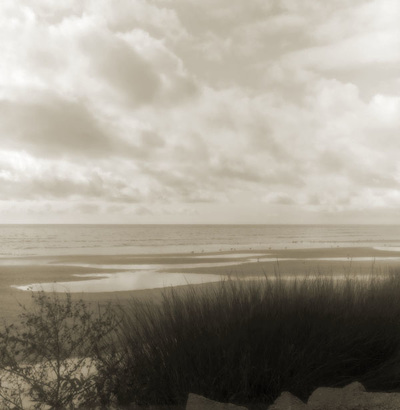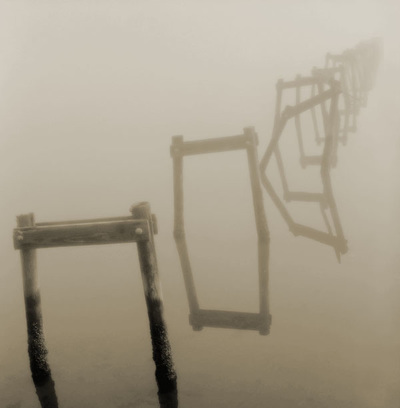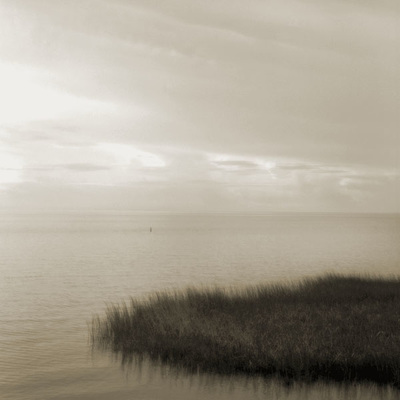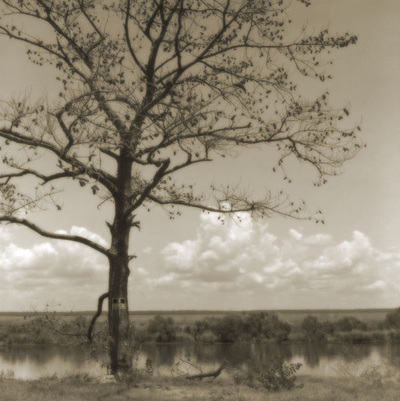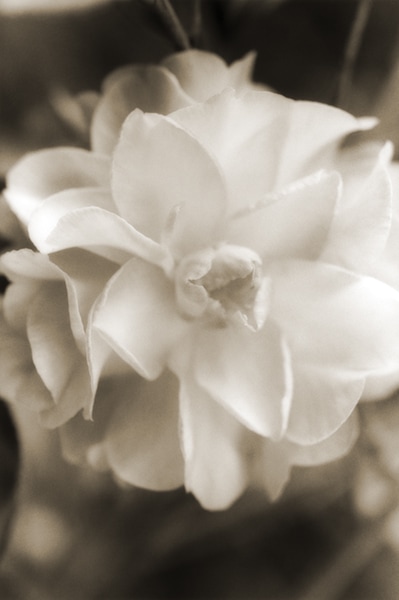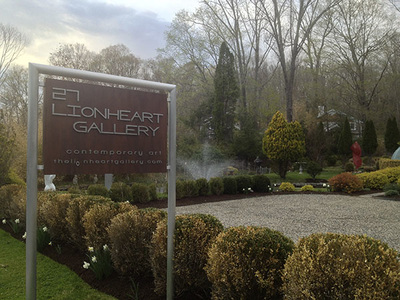In Search of Eden
In 1998, searching for an Eden of my own, I moved to a small coastal town in Mississippi. This search brought my work full circle and back to the landscape of my native South, which was the subject of my first photographic series in the early 1980's . This was a time of rediscovery for me, a time of reconnecting with the land that drew me on a journey of the senses along the Gulf of Mexico.
The coastlines along the Gulf have a lushness and sensuality unlike any other landscape. There is a sense of mystery and isolation, yet a beautiful and peaceful quality to the landscape. This region is unmistakably marked with a spirit of its own. Explorers, historians, writers, artists and musicians have been influenced by this region and by man's search for a place that is not only a physical one but one of myth and transcendence; a search for Eden.
The images from this series were places I saw almost every day. They are from my garden, the end of the block, around the corner, or a short drive away-images that we may not take the time to notice but by chance. Then an early morning fog, a storm moving in or the dappling of the last light of fall moving through the woods isolate the image and lead us to view the mystery of forms. The atmosphere transforms these very ordinary subjects into something quite extraordinary.
In August 2005 my husband Evert and I lost our home, studios and most of their contents in hurricane Katrina. In a matter of hours 30 years of work disappeared and our beautiful Eden was now a paradise lost. A sign of things to come in the face of climate change.
Excerpt from Work in Progress: Sandra Russell Clark, Mississippi Museum of Art 2003
The American South is a significant and constant source of inspiration for Clark’s work and the subject matter for many of her photographs. A native of New Orleans, her images investigate both the natural landscape and manmade environments of the region, ranging from the Gulf Coast shore to formal gardens to New Orleans’ aboveground cemeteries. In addition, Clark made numerous photographs while working in various locations in Europe, focusing her camera on similar subjects.
Alluring and occasionally brooding, Clark’s images seduce the viewer with their unabashed beauty and ignite feelings of melancholy, loss, and ultimately optimism. These contrasting states of decay and regeneration link Clark’s interest in Europe to a similarly history-rich South, both places which continue to experience cycles of death and rebirth to this day.
René Paul Barilleaux, Curator
The coastlines along the Gulf have a lushness and sensuality unlike any other landscape. There is a sense of mystery and isolation, yet a beautiful and peaceful quality to the landscape. This region is unmistakably marked with a spirit of its own. Explorers, historians, writers, artists and musicians have been influenced by this region and by man's search for a place that is not only a physical one but one of myth and transcendence; a search for Eden.
The images from this series were places I saw almost every day. They are from my garden, the end of the block, around the corner, or a short drive away-images that we may not take the time to notice but by chance. Then an early morning fog, a storm moving in or the dappling of the last light of fall moving through the woods isolate the image and lead us to view the mystery of forms. The atmosphere transforms these very ordinary subjects into something quite extraordinary.
In August 2005 my husband Evert and I lost our home, studios and most of their contents in hurricane Katrina. In a matter of hours 30 years of work disappeared and our beautiful Eden was now a paradise lost. A sign of things to come in the face of climate change.
Excerpt from Work in Progress: Sandra Russell Clark, Mississippi Museum of Art 2003
The American South is a significant and constant source of inspiration for Clark’s work and the subject matter for many of her photographs. A native of New Orleans, her images investigate both the natural landscape and manmade environments of the region, ranging from the Gulf Coast shore to formal gardens to New Orleans’ aboveground cemeteries. In addition, Clark made numerous photographs while working in various locations in Europe, focusing her camera on similar subjects.
Alluring and occasionally brooding, Clark’s images seduce the viewer with their unabashed beauty and ignite feelings of melancholy, loss, and ultimately optimism. These contrasting states of decay and regeneration link Clark’s interest in Europe to a similarly history-rich South, both places which continue to experience cycles of death and rebirth to this day.
René Paul Barilleaux, Curator




